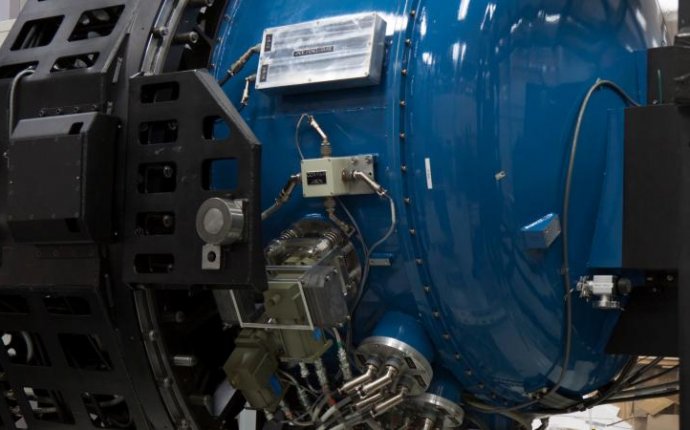
UCLA Astrophysics
The Division of Astronomy & Astrophysics is part of the Department of Physics & Astronomy, one of several Physical Sciences departments in the College of Letters & Sciences at UCLA.
Our faculty conduct landmark theoretical research ranging from the quark to the cosmos. These diverse areas of exploration make the UCLA Astronomy & Astrophysics Dvision an internationally recognized destination for scholarship and science.
Eric Becklin focuses on the observational studies of the regions around the Massive Black Hole in the center of the Milky Way and other regions of star formation in the Galaxy. He is the Chief Scientific Advisor on SOFIA.Ferdinand Coroniti studies space and plasma astrophysics, including physics of the Earth's magnetosphere (especially the dynamics occurring during substorms and magnetic storms), pulsars, relativistic winds, and supernova remnants, and the origin of the cosmic large-scale magnetic field.Mike Fitzgerald is interested in extrasolar planets and their formation using indirect and direct techniques such as adaptive optics, coronagraphy, and interferometry. He also works to develop infrared instrumentation.Steve Furlanetto is a theoretical cosmologist studying the first generations of galaxies in the Universe, their interactions with the Universe around them, and their observable signatures.Andrea Ghez and her collaborators are carrying out a diffraction-limited study of the Galaxy's central stellar cluster. This program has provided strong evidence for a supermassive black hole at the center of the Milky Way and is continuing to study the environs of this region.Michael Jura is indirectly measuring the elemental composition of rocky extrasolar planetesimals when they accrete onto white dwarfs and create a distinctive signature in the spectra of these stars.Matt Malkan studies the nature of active galactic nuclei and quasars, and the evolution of young galaxies in the high-redshift Universe. He is also working on the cosmic production of infrared radiation.Jean-Luc Margot and his group studies the formation and evolution of habitable worlds, primarily by quantifying the physical and dynamical properties of planets and exoplanets.Ian McLean studies star formation, low-mass stars, brown dwarfs and exoplanets using infrared imaging and spectroscopy. He founded UCLA's infrared laboratory for astrophysics in 1989 and was the principal investigator for the NIRSPEC infrared spectrometer and the MOSFIRE multi-object infrared spectrometer and camera on the Keck telescopes.Mark Morris studies the fate of massive stars and star clusters at the Galactic center, and is trying to determine the character and the origin of the magnetic field in the central few hundred parsecs of the Galaxy. He also studies the hot, diffuse gas at the Galactic center with the Chandra and XMM X-ray observatories.Smadar Naoz is a theoretical astrophysicist studying wide range of different dynamical problems from exoplanets, stars and black holes. She also studies the formation of structure in the early Universe.William Newman is a theorist who employs computational and analytic methods to study dynamical problems germane to stellar and galactic dynamics, astrophysical jets and magnetohydrodynamic processes, as well as statistical problems is astronomy and cosmology.Rene Ong focuses on high-energy processes in the universe, using gamma-ray observations to understand sources such as supernova remnants, binary systems, and AGN. Another important area of interest is the search for particle dark matter using astrophysical probes such as gamma rays and anti-matter.Michael Rich works on galaxy evolution from a near-field cosmology perspective, using the Keck, Hubble, and other telescopes. Studies encompass the Galactic bulge, Milky Way, Local Group galaxies, the extended halos of nearby galaxies, and include galaxy evolution using UV astronomy from the GALEX satellite archives. New wide field imaging surveys include the Dark Energy Camera and a novel telescope designed to push to the extremes of low surface brightness.Alice Shapley uses optical and infrared imaging and spectroscopic observations of high-redshift galaxies to understand how galaxies form, evolve, and affect their intergalactic environments. Specifically of interest are the star-formation and metal-enrichment histories of galaxies, the development of galaxy structure, and the important process of "feedback."Tommaso Treu is attracted to the invisible universe: dark energy, dark matter, and black holes. He is also fascinated by the photons and baryons that lighten up the dark universe. His group uses a variety of tools (including adaptive optics, to ground and space based imaging and spectroscopy, gravitational lensing) to observe these phenomena, and then models them using Bayesian inference techniques.Jean Turner uses the Keck telescopes, the VLA, infrared, millimeter, and sub-millimeter telescopes to study star formation in starbursts, especially super star cluster formation.Vladimir Vassiliev focuses on the high-energy astrophysics processes in the Universe utilizing the VERITAS ground-based gamma-ray observatory, including indirect detection of dark matter and study of intergalactic magnetic fields. He also develops novel imaging techniques for a future ground based gamma-ray observatory called Cherenkov Telescope Array (CTA).Ned Wright works on cosmology and infrared astronomy primarily using space data from COBE, WMAP, Spitzer and WISE. He is the principal investigator on WISE, which has just been re-activated as NEOWISE-R to search for Near Earth Objects.Ben Zuckerman is interested in identifying young stars near Earth in order to search for planets and understand the formation of solar systems.











